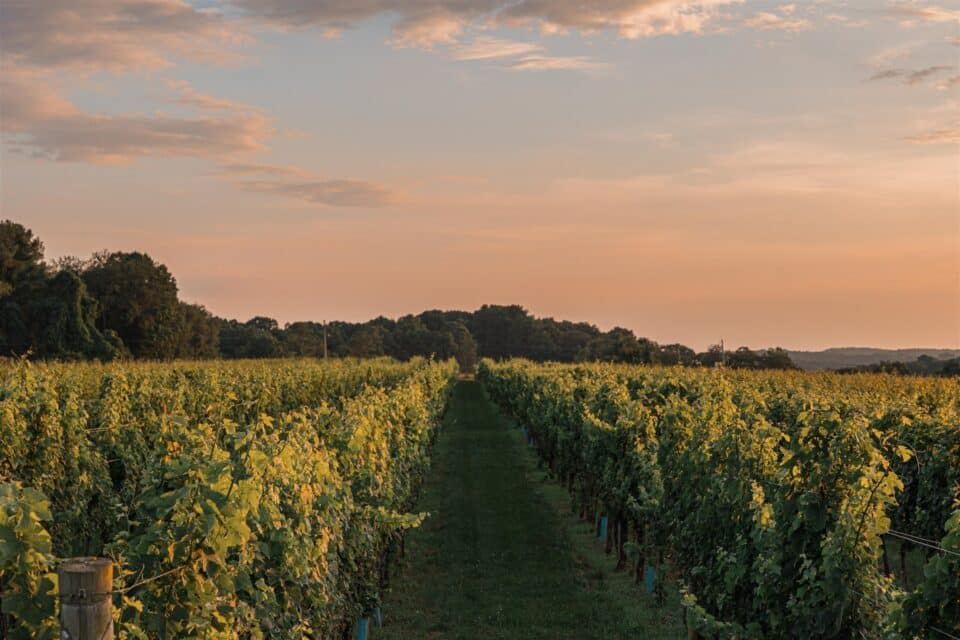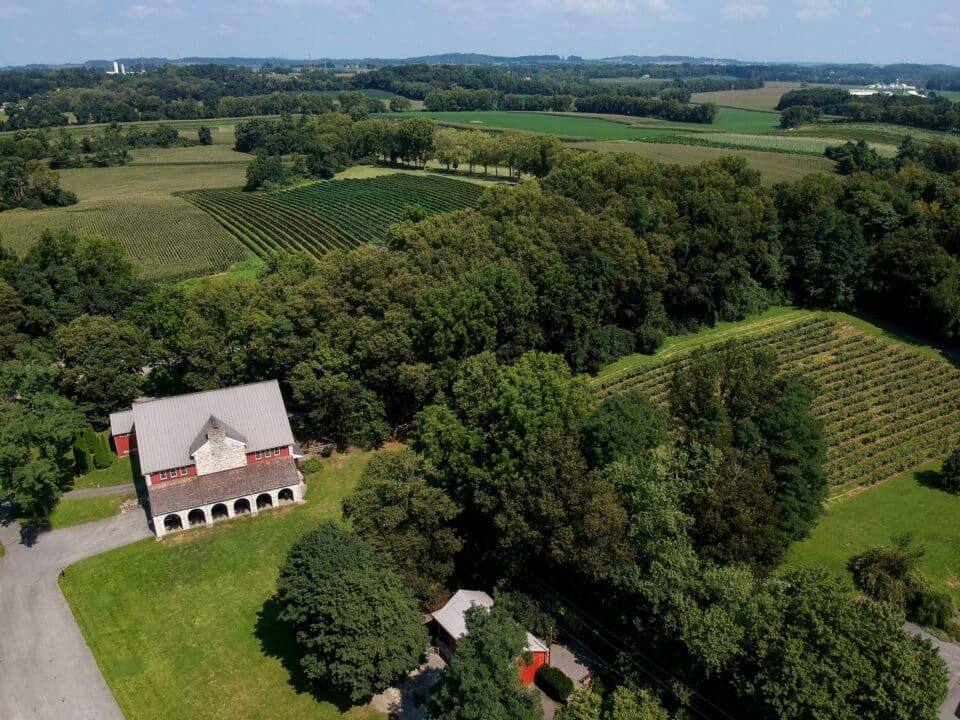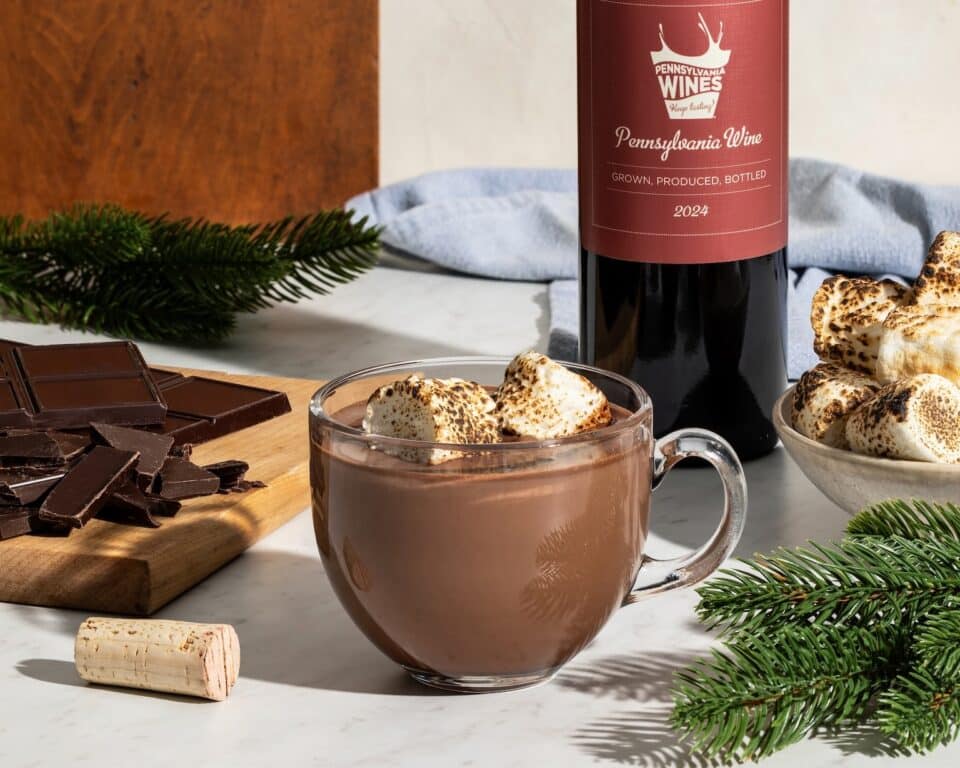The grape harvest in a vineyard is a culmination, a crowning moment and a swan song following months of meticulous attention, fine-tuning and unexpected difficulties. Not all grapes make it to the harvest, but those that do cross the special threshold from fruit into wine. Pennsylvania vineyard harvests have their own unique set of challenges and triumphs, with end results that continue to beckon grape growers and winemakers through the yearly journey.
We spoke with Missy Wilson, co-owner and manager of Setter Ridge Vineyards in Kutztown, about what goes into harvesting a vineyard in Pennsylvania. She shared an in-depth look at the process and techniques of harvesting grapes and what makes every vintage harvest unique.
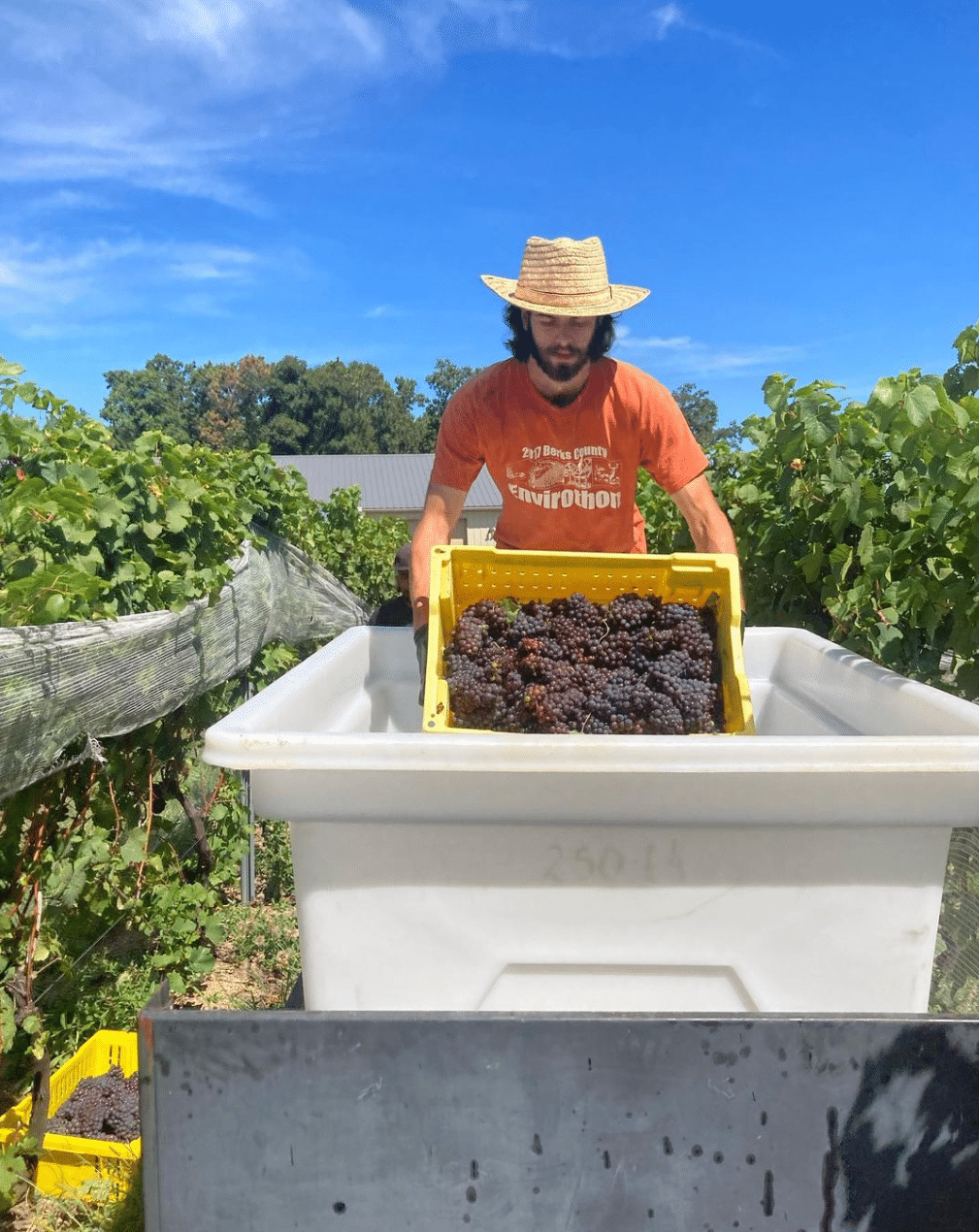
Timing the Harvest
Pennsylvania vineyard harvests take place in August through October. The exact timing depends on quite many factors and differs greatly from year to year. Wilson says, “It all depends on how the growing season has gone. It starts in April and then you track the weather all the way through.”
Grape growing season begins with bud breaks and blooms in April and May, which are affected by weather, particularly temperatures that speed or slow the process, and frost, a peril. Then, the summer weather ahead affects the grapes’ ripening. The warmer the summer months, the quicker the ripening process. A very hot summer like 2024’s will typically lead to an early harvest.
As peak ripeness approaches, knowing when to actually pick the grapes is a two-fold process at Setter Ridge. The first part is testing samples that are nearing maturity. Vineyard farmers test the sugar and the acid in the grapes to make sure they’re both in the right place.
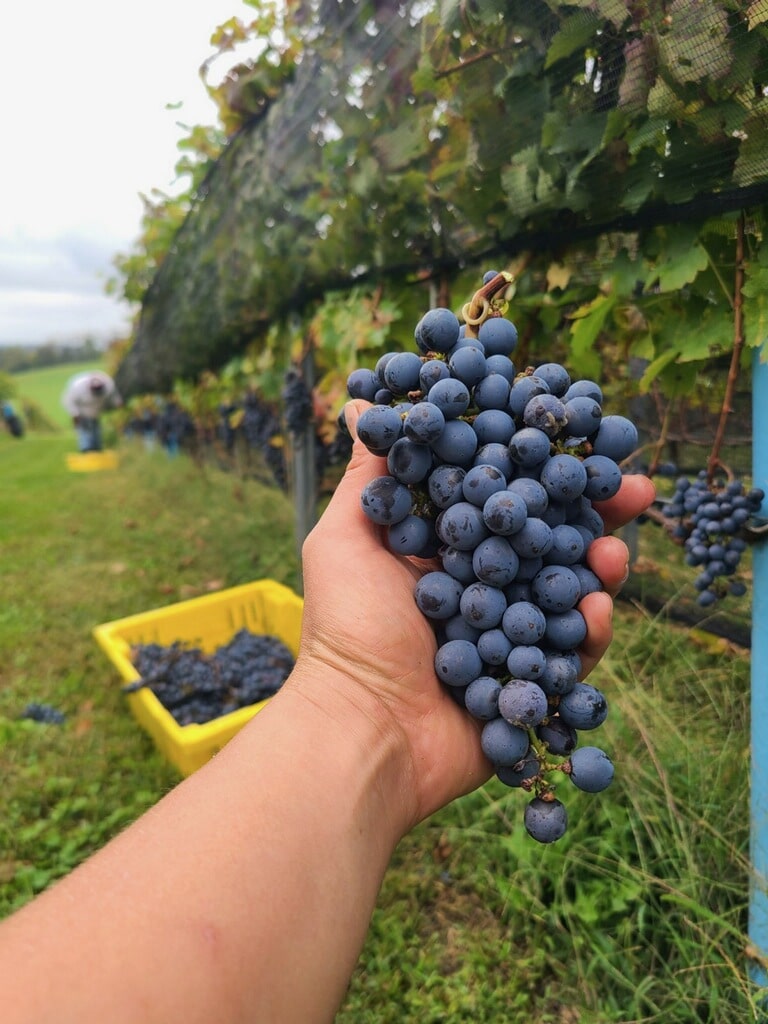
“As the grape ripens, sugar levels go up, which creates the alcohol content while the acid drops. But, you don’t want that acid to drop too much, because the wine depends on it. You really want to find the balance. We’ll test grapes all the way up until the time of picking,” says Wilson.
Secondly, as the harvest time nears, vineyard farmers taste the grapes. Wilson says, “You can learn a lot about what’s going on in the grapes that way, especially with red wines, like how tannic or ripe/unripe they are.”
The harvesting or picking season extends for a long period of time. Wilson compares it to apples, with different varietals ripening at different times. With grapes, the sparkling and white wine varieties are typically picked first. This is followed by Pinot Noir, a thinner-skinned, lighter red, and then deep, heavy reds like Cabernet Franc and Petit Verdot.
Wilson says, “For sparkling wine, you ferment the grapes twice. The first time is for the base wine and the second is for the bubbles. Because you’re fermenting twice, you want a lower initial alcohol content and higher acid for acidity and crispness.”
With red wine grapes, vineyard farmers generally seek a plump, deeper-hued grape that tastes sweet for harvest.
Leading Up to Harvest
Grape vines are cared for throughout the summer, typically by a team of vineyard farmers. Well before the harvest, they use a variety of pruning and care methods for the vines and young grapes. Early in the summer, farmers perform shoot positioning and thinning. Shoot positioning is a re-orientation of the vines to create a more evenly distributed canopy. Thinning involves removing vine clusters that are overcrowded in the hopes of increasing the ratio of fruit to leaves. Both of these methods allow for more sunshine to reach the grapes.
As the summer goes on, vineyard farmers also do leaf pulling, another way to increase sunlight on the grapes. They’ll also do hedging: topping the vines to impede further growth and direct its energy toward the fruit. These methods are done by hand or mechanically, or a combination of the two, depending on the vineyard.
Later in the summer, as the grapes begin to really ripen, vineyard owners face a new challenge: competition.
Wilson says, “During the majority of the season, the grapes don’t taste good and the animals don’t want them. Once they start ripening, it becomes an issue with deer and birds. When we get that pressure, we put nets over the grapes, so the birds don’t eat or peck at them and leave them susceptible to diseases.”
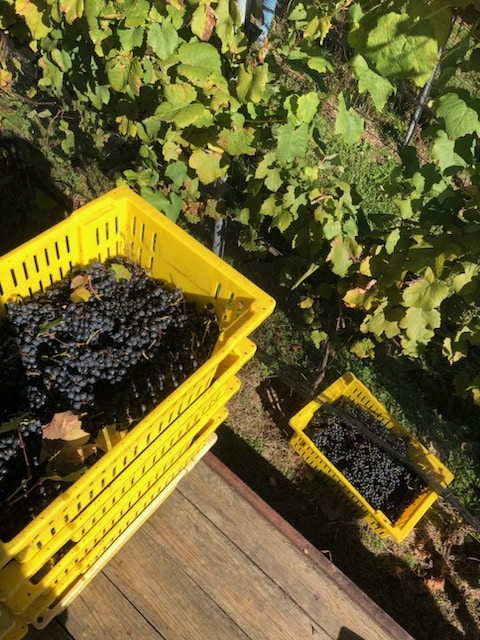
Harvest Time
Once the grapes are deemed perfectly ripe, it’s time to harvest. At Setter Ridge, the harvest is done 100% by hand. Many vineyards do the same, while some make use of machinery that essentially shakes the grapes off the vine.
At “go time,” Setter Ridge calls in reinforcements, a team that helps support the harvest of its 28 acres. The harvest goes section by section, depending on which grapes are ready when.
The team will hand pick between three and seven tons of grapes in a day, placing the grapes into lugs that hold about 35 pounds of fruit each. “We do it in spurts, about a ton at a time,” Wilson explains. If the grapes will be processed right away, vineyard farmers need to reserve time and energy for that task, too.
Grapes also need to be chilled so that fermentation doesn’t begin too quickly. If the grapes are too hot, a natural fermentation can occur. For early grapes, like white wine grapes, Setter Ridge uses a snow gun-like device for cooling them off. Other wineries may store them in temperature controlled facilities. As the season progresses and temperatures drop, there’s less of a pressing need to cool the grapes right away, if at all.
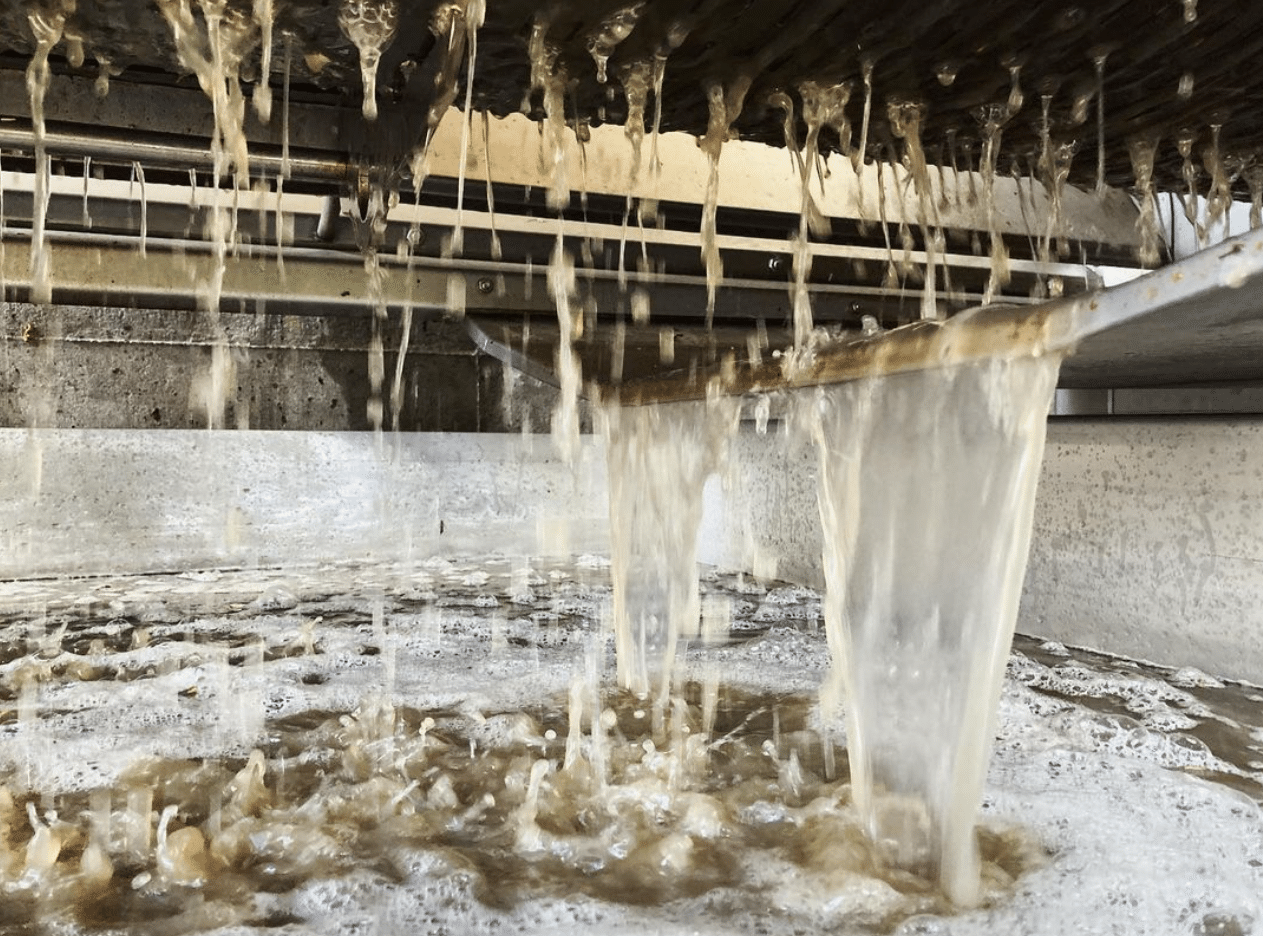
The Setter Ridge team presses the white wine grapes immediately. “You nick the berry and take the juice, and the juice is what you ferment,” Wilson says. For red wine grapes, you’re fermenting the whole grape, and there’s a bit more at play. Tannins exist in the stems (and seeds) of the grape, which create a nice, dry mouth feel of many reds. So, depending on the age and characteristics of the vine, and what your goal is for the wine, you may leave some grapes attached to their vines for early parts of the fermentation process. This selection step sits between harvest and fermentation.
Factors Affecting Harvest Yields
A perfect growing season is rare, and many elements come into play that affect harvest yields. One huge, early-striking factor is frost. Wilson says, “This year we had a really warm winter. If your buds break early, and then you get a frost, you can lose a lot of your crops.”
She adds, “Things like hail damage, if it comes through at the wrong time – like during bloom – it can knock the forming grape clusters off. There’s also disease, like powdery mildew, that affects the growth of the vine itself. Plus, animals: racoons, deer and birds. Then, of course: weather. You never really know. You can have all this great weather for months, and then have one week of torrential downpour, and you may have to worry about mold. Even if you’re only weeks away from harvest, you could lose crops to hurricanes, humidity and stuff like that. Our summers are a gamble.”
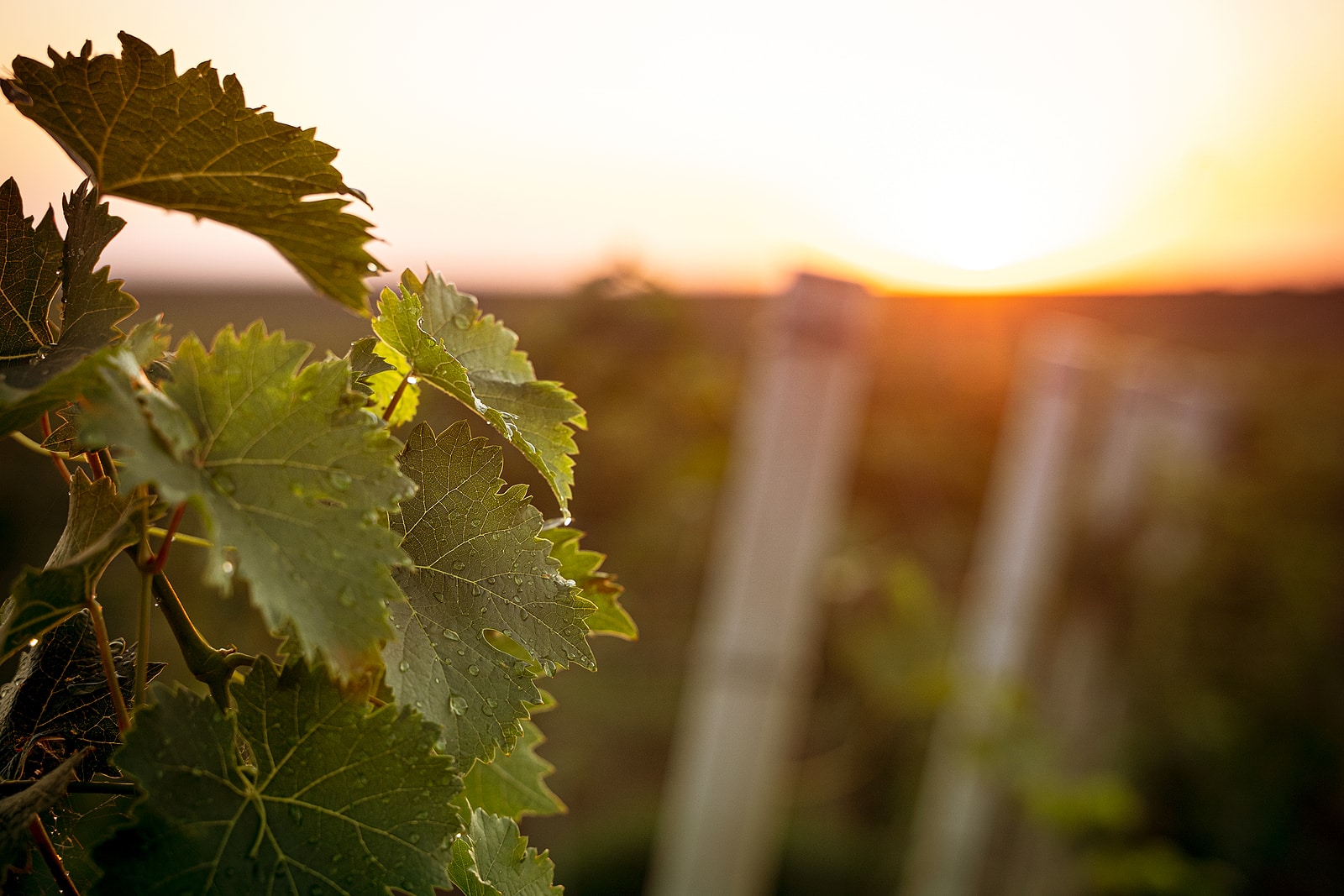
The Effects of Climate Change
Warmer temperatures mean earlier seasons, which can increase the damage caused by an early frost if the vine buds are opening. Warmer weather also means that grapes ripen quicker over the summer. But those are not the only changes affecting the harvest, nor the most concerning.
“Unfortunately, on the East Coast, climate change brings issues with hurricanes and humidity and rain, which can negate the whole grape-ripening summer. That’s the most concerning factor for us: what’s going to happen with moisture and rain over the course of late August and early September.”
“We go in spurts. Last year was a summer like this one, beautiful and warm and then three weeks of rain when we needed to pick. White wines and heavier wines were fine. But with Pinot Noir, a thin-skinned, finicky grape, we lost a huge amount of our vintage due to mold and rot getting in, due to all the rain we had.”
Manpower and Machines
Harvesting grapes is a tremendous undertaking. Setter Ridge has the manpower and teams for picking, which it doesn’t take for granted.
“We can still get people in to pick, but a big challenge can be staffing. In agriculture in general, the hard part isn’t necessarily the growing. It’s getting staff on hand and employees to work the vineyard, because everything is very much manual. You can’t use a tractor to do half of the stuff that we need to make happen. It’s hard to find manual labor. We’re blessed to have that,” says Wilson.
She explains that vineyards often share crews who work on-call at multiple locations. But with such delicate harvest timing, this can feel precarious. “When you’re ready to pick, will you have your crew there?”
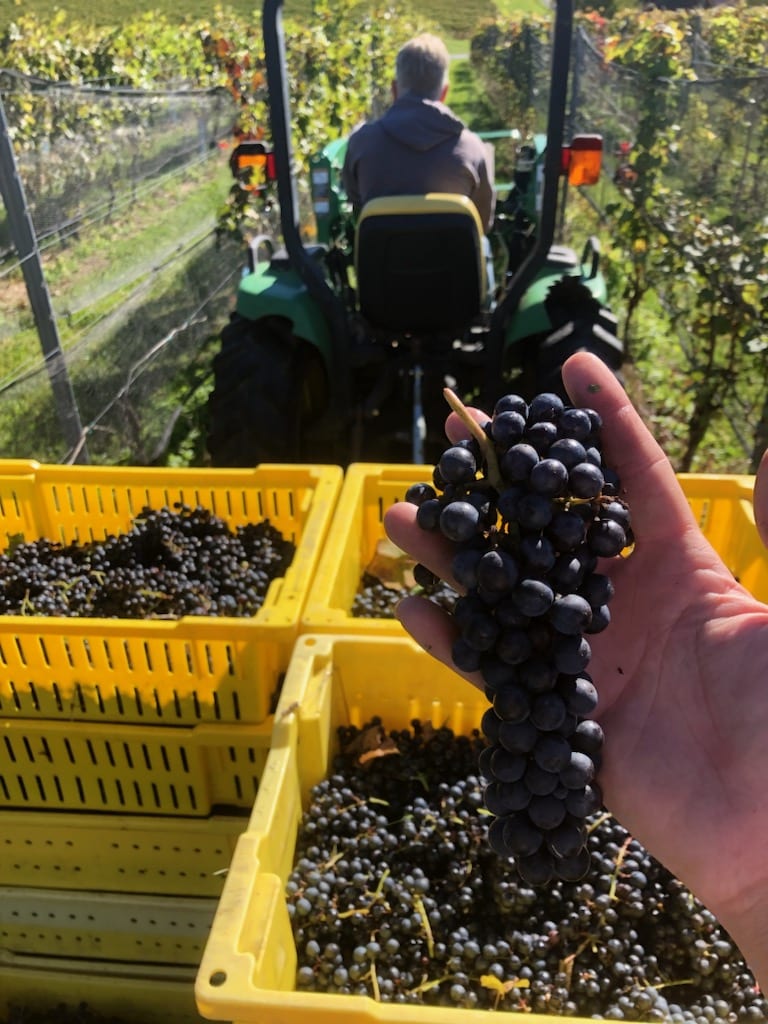
Advances in mechanical harvesting can offer alternative solutions. Wilson says, “Before, with mechanical harvesters, you had to buy a huge machine and it was really expensive to maintain. They now have tow-behind harvesters that you hitch to the tractor. We haven’t made a decision on that for us, but I know a lot of places have gone in that direction because you don’t need as much manpower.”
These harvesting machines work well with more ideal harvests, but can complicate the process of sorting the grapes, which vineyard farmers often do while picking, not after the fact. However, sorting machinery, similar to conveyer belts, can supplement the hand sorting done in the vineyard.
Though technology for the harvesting process improves, this ancient practice still hinges on the skill, attention and care of vineyard farmers.
An Insider View of Harvesting
Looking to see (and touch) the harvest for yourself? Wineries like Setter Ridge offer experiences for guests and customers to be a part of the picking season. Wilson says, “We do vineyard tours once a month throughout the year. They’re complimentary. It gives customers a chance to see what’s happening in the vineyard at that point in time. They’re April through October, so you get to see changes in the vineyard.”
Setter Ridge also holds volunteer pick days, where people sign up to help harvest grapes. “We provide lunch and wine, and they can stick around and see what happens when we start to process the grapes.”
“When we first planted the vineyard almost 30 years ago, we needed help. Friends and family came to pick. Now we have our crew, but people still really enjoy that hands-on experience and seeing how the grapes actually turn into wine.”
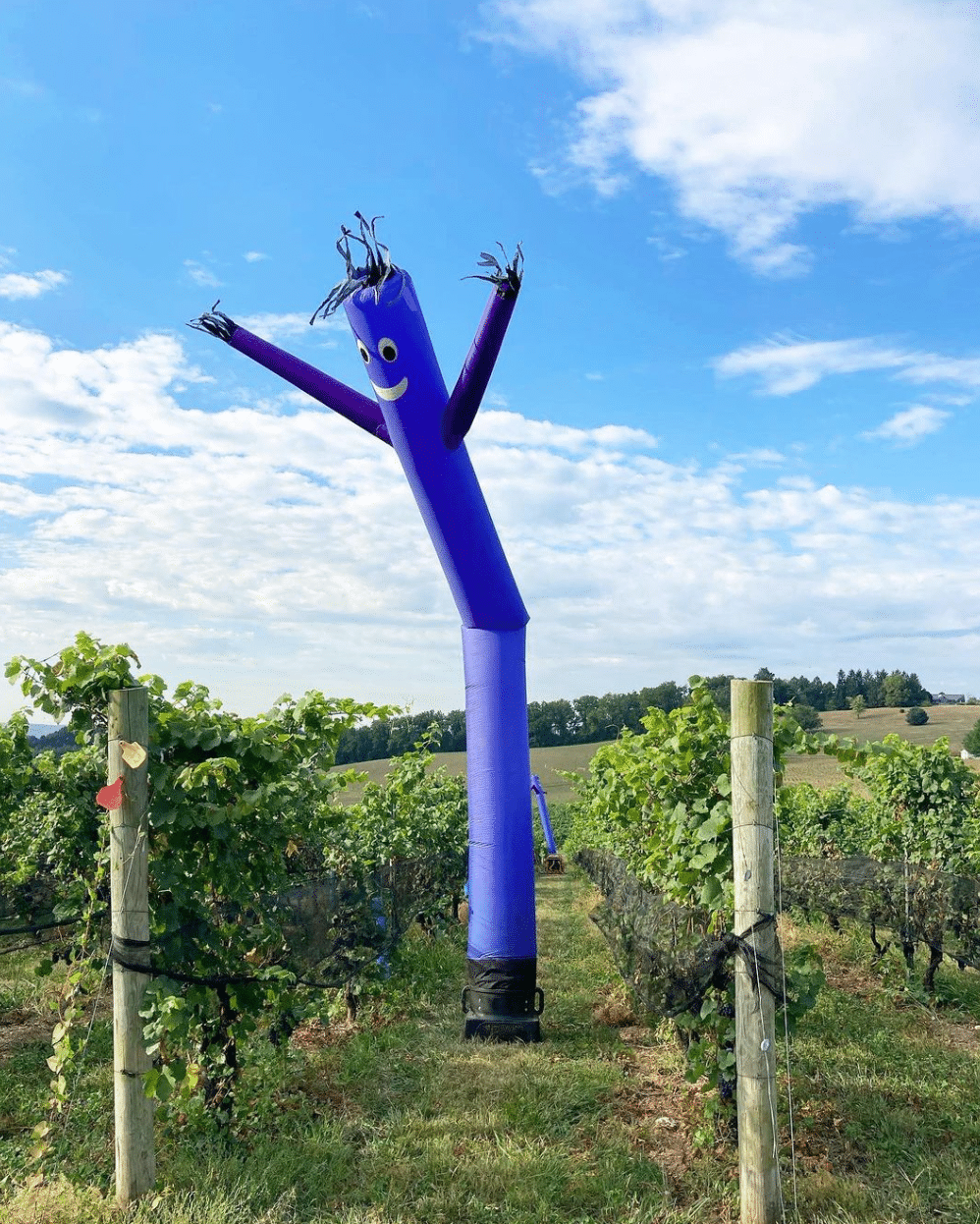
The PA Vines & Wines series was created in collaboration with the Pennsylvania Wine Association with Round 8, Act 39 grant funding from the Pennsylvania Liquor Control Board (PLCB).
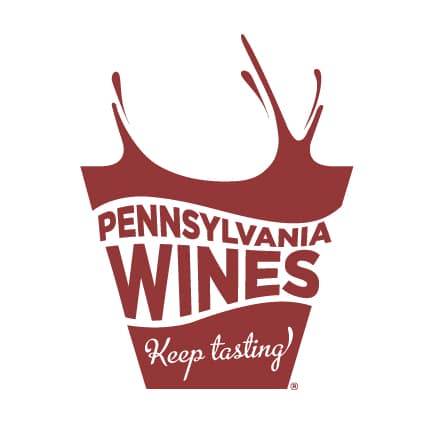
The Pennsylvania Winery Association (PWA) is a trade association that markets and advocates for the limited licensed wineries in Pennsylvania.
- Photos: Setter Ridge Vineyards
- Leaf close-up photo: Bigstock
